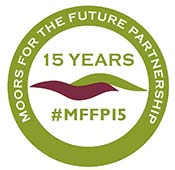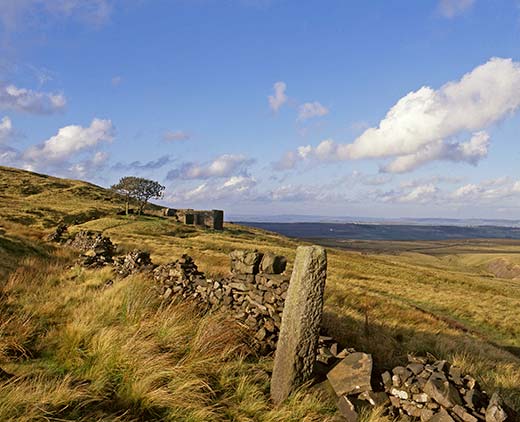 Celebrating moorland that inspired Wuthering Heights on bicentenary of Emily Brontë's birth
Celebrating moorland that inspired Wuthering Heights on bicentenary of Emily Brontë's birth
Wednesday, 25 July 2018
The South Pennine moors that inspired fictional masterpiece Wuthering Heights have changed dramatically in the 200 years since its author, Emily Brontë, was born.
Literary fans across the globe are gearing up to commemorate the middle Brontë sister on the bicentenary of her birth on Monday 30th July.

Top Withens. Photo: Simon Warner
Little did Brontë know as she penned her acclaimed 19th Century novel, that the moorlands she so adored surrounding her family home in West Yorkshire were beginning their very own bleak chapter.
Back in Brontë's Day…
Brontë took inspiration from the moors around Haworth and above Hebden Bridge for the narrative and mood of her only novel. It tells the passionate and revengeful story of doomed lovers, Heathcliff and Catherine, who's fondness for each other extended to the "wild green park" of the South Pennine moors, where the grand farmhouse Wuthering Heights stood.
As Brontë wrote her iconic tale, the Industrial Revolution was steam rolling across Britain. Advancements in technology and manufacturing contributed to the eventual decline of the moors, as pollution from nearby quarries and factories rained on to the open landscapes, killing much of the delicate bog plant life such as Sphagnum moss.
Safeguarding moorland heritage
Despite Heathcliff and Catherine's ill-fated relationship, there was a much happier outlook for Brontë's beloved South Pennine moors.
The Moors for the Future Partnership has been working since 2003 to bring the precious, blanket bog landscapes back to life, by undertaking specialist conservation and scientific research.
Yorkshire Water owns the land where it's claimed that Brontë took her inspiration for the location of Wuthering Heights. The Partnership has been working there since 2007, to improve drinking water quality, lock up carbon, and enhance the habitats for wildlife.
Works included constructing many miles of dry-stone walls and fences to manage livestock, enabling the best grazing management to improve these sites for wading birds. Restoration tasks also involved spreading lime, seed, fertiliser and heather brash, to revegetate bare peat, (the worst possible condition for blanket bog), and blocking up eroded channels in the landscape.
There was also work to control species like rhododendron which can take over upland habitats if not kept in check; as well as planting trees in steep-sided moorland valleys and cloughs, and to re-invigorate existing older woodlands.
Loved by so many
Carol Prenton, Land and Property Surveyor at Yorkshire Water, said, "The moors around Haworth are a source of huge admiration for literary fans across the globe, who visit in their thousands every year to see the places that inspired Emily Brontë's novel.
"Working together with the other organisations that make up the Moors for the Future Partnership is so important, as we help to conserve and enhance these very special places for many generations to come."
John Thirlwell, Chair of the Brontë Society Board, explained, "Emily was the fifth of the six Brontë children. After the loss of her mother in 1821 and her two oldest sisters in 1825, Emily, Anne, Charlotte and Branwell, with only five years separating them, became a close and exclusive band. They neither went to school, nor made friends, in the village. Their playgrounds were the open moors at the back of the house, and their own imaginations."
Brontë's birthday celebrations
The Moors for the Future Partnership's Bogtastic Van will be at Moorside Lane in Haworth to celebrate the renowned Brontë sister's birthday from 11am to 2pm on Monday 30th July.
The Partnership is commemorating its 15th anniversary this year with the 200th anniversary of Brontë's birth being one of 15 unique events to mark the special occasion.
Visitors will be able to step on board the state-of-the-art mobile exhibition vehicle, to experience the sights, sounds and textures of the local moors that inspired a literary work of genius. No booking is necessary, it's free to attend; just turn up to enjoy!

